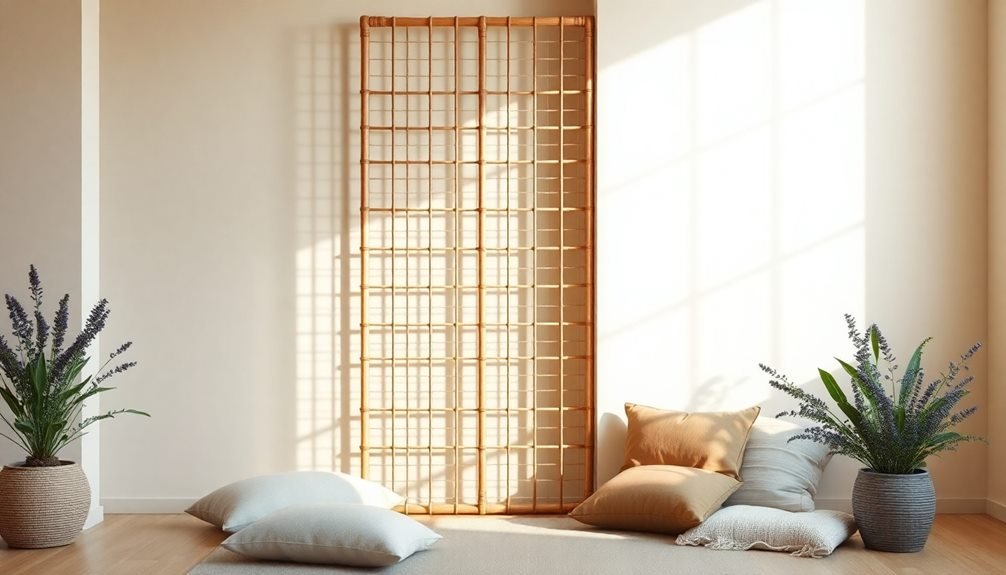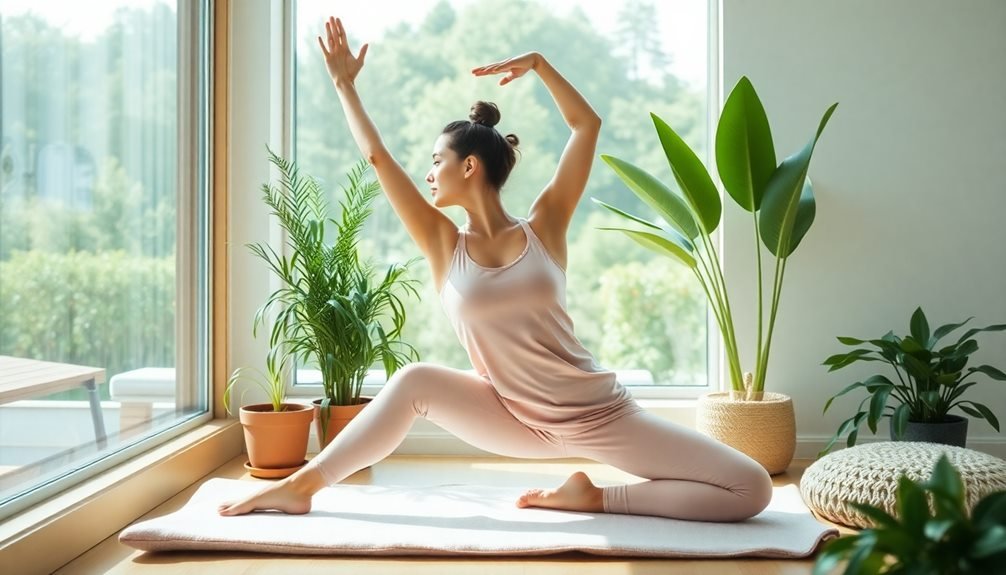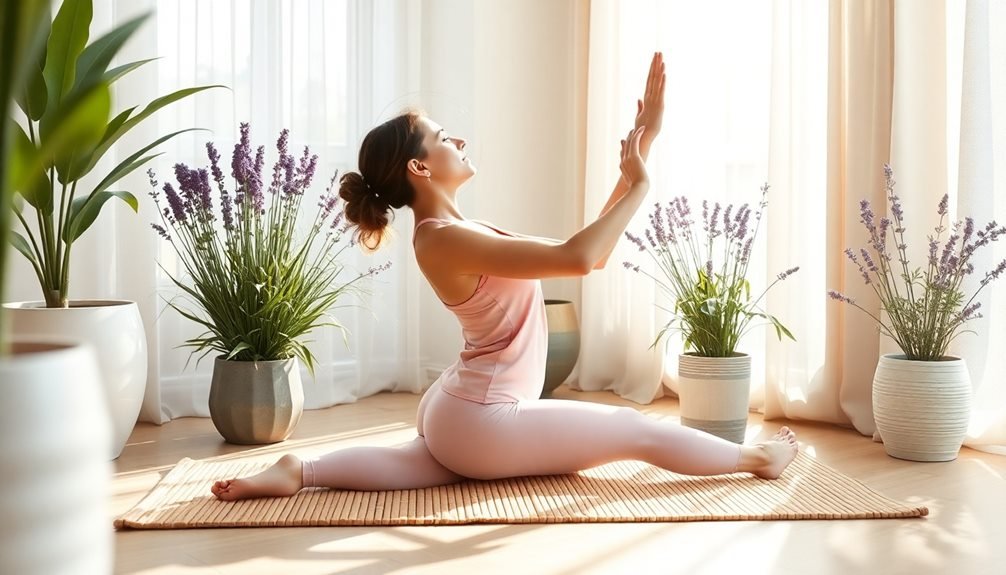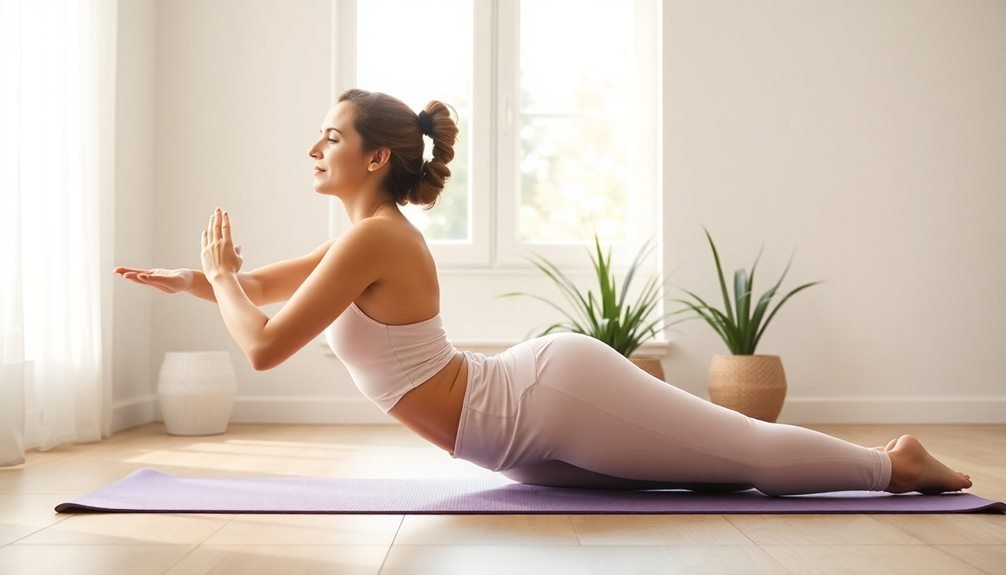Anxiety-friendly room dividers can transform your space into a calming sanctuary that puts you in control of your environment. You'll benefit from thoughtfully designed elements like soft curves, natural materials, and adjustable panels that create personal safe zones while maintaining openness. These dividers help manage sensory input through strategic light filtering and tactile comfort, giving you the power to adjust your surroundings based on your emotional needs. With features like movable screens and translucent panels, you can easily adapt your space to prevent overwhelm while keeping it organized and peaceful. Discover how these mindful design choices can enhance your daily well-being and create a more grounding atmosphere.
Understanding Anxiety-Friendly Design Elements

Many anxiety-friendly design elements focus on creating a sense of security while maintaining openness and flexibility. When you're dealing with anxiety, your environment plays a vital role in managing stress levels and promoting calm.
You'll want to incorporate design features that offer both physical and psychological comfort without triggering feelings of confinement. Key anxiety-friendly elements include soft, curved edges instead of sharp corners, natural materials that provide tactile comfort, and adjustable components that give you control over your space.
You'll benefit from designs that allow natural light flow while still providing privacy when needed. Colors also matter greatly – neutral, nature-inspired tones help create a soothing atmosphere that won't overwhelm your senses.
The height and transparency of room dividers are particularly important. You'll want options that let you see beyond your immediate space while still defining distinct areas.
Semi-transparent materials like frosted glass or perforated panels can reduce visual clutter without creating a sense of isolation. Consider dividers with sound-dampening properties too, as they'll help create quiet zones that can serve as peaceful retreats when you need to decompress.
Creating Personal Safe Zones
Room dividers serve as powerful tools for establishing personal safe zones – dedicated spaces where you can retreat when anxiety feels overwhelming. By strategically placing dividers, you'll create a protective boundary that helps manage sensory overload and provides a sense of security in shared environments.
When designing your safe zone, consider incorporating soft textures and calming colors into your divider choice. You can enhance the space with weighted blankets, comfortable seating, and noise-reducing elements to create a multi-sensory haven.
Position your divider to block direct sight lines while maintaining easy access to exits, which helps reduce feelings of confinement.
Your safe zone should reflect your personal comfort needs. If you're sound-sensitive, opt for acoustic panels or fabric-covered dividers that absorb noise. For visual overwhelm, choose solid panels rather than see-through options.
You can also personalize your space with familiar objects, such as family photos or comfort items, that ground you during anxious moments.
Remember to keep the area clutter-free and organized, as visual chaos can trigger anxiety. Ascertain your safe zone remains easily accessible whenever you need to step away and regroup.
Natural Materials for Calming Spaces

Natural fibers and materials bring an instinctive sense of calm to anxiety-friendly spaces. When choosing room dividers, you'll want to prioritize elements like bamboo, rattan, cotton, and jute that connect you to nature and help reduce stress levels.
These materials don't just look organic; they also help regulate humidity and create better air quality in your space. You can maximize the calming effects by selecting dividers with natural wood frames or woven grass panels.
Bamboo screens offer excellent versatility while providing a sustainable choice that adds warmth to your environment. Rice paper panels, common in traditional Japanese design, filter light gently and create a soft, diffused glow that helps ease anxiety.
Consider incorporating cotton or linen curtain dividers, which add texture while allowing air to flow freely. These breathable fabrics won't trap stale air or create stuffy spaces that might trigger anxiety.
For added grounding effects, choose earthy colors and raw, unprocessed finishes. You'll find that natural materials age beautifully, developing character over time and maintaining their soothing properties throughout their lifespan.
Their imperfect, organic patterns help break up the rigid lines that can make spaces feel overwhelming.
Flexible Space Management Solutions
Building on the calming qualities of natural materials, adaptable space management brings another layer of anxiety relief to your environment.
You'll find that movable room dividers let you instantly respond to your emotional needs by adjusting your space's layout and flow. When anxiety strikes, you can quickly create a cozy nook or open up the area for better breathability.
Consider installing sliding panels or folding screens that you can reposition throughout the day. These flexible solutions work well when you need to separate your workspace from your relaxation area or create temporary boundaries during overwhelming moments.
You'll benefit from portable dividers on wheels that you can easily roll away when not needed, giving you complete control over your environment.
Look for modular systems that allow you to add or remove panels as needed. These adaptable solutions help you maintain a sense of order while accommodating changing anxiety levels.
Light and Shadow Balance

Effective light management through room dividers plays an essential role in managing anxiety levels. By strategically placing dividers, you'll gain control over how natural and artificial light flows through your space, creating a more balanced and calming environment.
You can use translucent dividers to diffuse harsh sunlight, which helps prevent overwhelming brightness while still maintaining an open feel. These panels act as natural light filters, softening shadows and reducing glare that might trigger anxiety or visual stress.
For maximum flexibility, consider adjustable slat dividers that let you modify light penetration throughout the day.
When you're dealing with artificial lighting, your room dividers can help create distinct zones with different lighting intensities. You'll want brighter areas for tasks that require focus and dimmer spaces for relaxation.
Position your dividers to block direct light sources while allowing indirect illumination to create a gentle ambiance. Materials like frosted acrylic or rice paper panels work particularly well for this purpose, as they scatter light evenly and eliminate harsh contrasts that might increase anxiety levels.
Frequently Asked Questions
How Much Does a High-Quality Anxiety-Friendly Room Divider Typically Cost?
You'll find high-quality anxiety-friendly room dividers ranging from $150 to $500, depending on size and materials. Premium options with sound-dampening features and calming designs can cost up to $1,000 or more.
Can Room Dividers Affect the Resale Value of a Property?
Room dividers won't greatly impact your property's resale value since they're easily removable. However, if you've installed permanent divider solutions, they could affect value depending on buyer preferences and installation quality.
Are Anxiety-Friendly Room Dividers Covered by Insurance for Therapy Spaces?
You'll need to check with your specific insurance provider, as coverage for therapy room equipment varies. Some providers may cover dividers if they're medically necessary and prescribed by a healthcare professional.
How Long Do Eco-Friendly Room Divider Materials Typically Last?
You'll find eco-friendly room dividers last 5-10 years on average. Bamboo and reclaimed wood can endure 10+ years, while recycled fabric dividers typically need replacement after 3-5 years of regular use.
Do Room Dividers Require Professional Installation for Optimal Anxiety-Reducing Benefits?
You don't need professional installation for anxiety-reducing room dividers. Most designs are DIY-friendly with simple assembly. You'll get full benefits by carefully following instructions and placing them where they'll create your desired calm space.
In Summary
You'll find that anxiety-friendly room dividers aren't just practical space solutions – they're essential tools for your mental wellbeing. By incorporating these thoughtful elements into your home, you're creating adaptable sanctuaries that respond to your emotional needs. Whether you're seeking privacy, calm, or flexible living spaces, these dividers work double-duty to transform your environment while supporting your mental health journey.





Leave a Reply